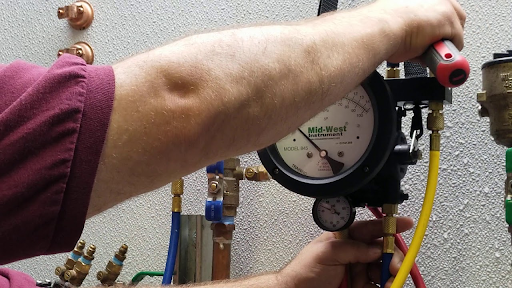Water quality is a critical aspect of public health and safety. Ensuring that potable water systems remain free from contamination is a key responsibility for water authorities, businesses, and homeowners alike. One of the most effective tools in safeguarding water from backflow contamination is the backflow preventer. To ensure these devices function correctly, backflow preventer test kits play a crucial role. This article explores the significance of these test kits in maintaining water quality and protecting public health.
What Is a Backflow Preventer?
A backflow preventer is a mechanical device installed in plumbing systems to prevent the reverse flow of water. Backflow can occur when there is a sudden change in water pressure, such as a drop in pressure or a surge, causing water to flow back into the system. This backflow can bring contaminants from non-potable sources, such as wastewater, chemicals, or fertilizers, into the potable water supply. By stopping this reverse flow, backflow preventers help ensure that drinking water remains safe for consumption.
The Role of Backflow Preventer Test Kits
Backflow preventers, like all mechanical systems, require regular maintenance and testing to ensure they operate effectively. This is where backflow preventer test kits come into play. These kits allow professionals to assess the functionality of the backflow preventer by measuring key parameters such as pressure and flow rate. If the preventer is not working correctly, contaminants could potentially enter the water supply, leading to serious health risks.
Backflow preventer test kits typically consist of specialized equipment, such as pressure gauges, hoses, and valves, designed to simulate real-world conditions. The tester uses these tools to assess whether the preventer is functioning as it should, verifying that it is closing properly when necessary and preventing reverse flow. Regular testing ensures that backflow preventers are in optimal working condition and compliant with local regulations.
The Importance of Regular Testing
Regular testing of backflow preventers is vital for several reasons:
1. Prevention of Waterborne Diseases: Backflow incidents are often responsible for contaminating potable water with harmful bacteria, viruses, and chemicals. Without a reliable backflow preventer, the potential for waterborne diseases like Legionnaires’ disease, giardiasis, and cryptosporidiosis increases dramatically. By using backflow preventer test kits to ensure these devices are functioning properly, authorities can significantly reduce the risk of such outbreaks.
2. Compliance with Regulations: Many local governments and water quality authorities require that backflow preventers be tested periodically. For businesses, especially those in food service, healthcare, and manufacturing industries, this is not just a matter of public safety but also legal compliance. Failure to test backflow preventers could result in fines, penalties, or the suspension of business licenses.
3. Preventing Costly Repairs: If backflow preventers are not functioning properly, they can lead to significant damage to plumbing systems, as well as the contamination of expensive equipment and infrastructure. Regular testing helps identify small issues before they escalate into more significant problems that require costly repairs or replacements.
4. Maintaining Water Quality: In addition to preventing contamination, backflow preventer test kits also help ensure that water pressure is maintained at safe levels. Adequate pressure is necessary to keep water flowing correctly through pipes and to prevent undesirable consequences such as low water pressure or system failure. Test kits help maintain the integrity of the water supply system by detecting issues early on.
The Testing Process: How Backflow Preventer Test Kits Work
The process of testing a backflow preventer using a test kit typically follows a systematic approach. First, the professional will disconnect the water supply to the device. Then, they will attach the test kit’s hoses to the backflow preventer’s test ports. Using pressure gauges, they will monitor the water pressure at various points in the system. Any irregularities, such as incorrect pressure readings or failure to hold pressure, indicate that the backflow preventer needs attention.
The test should be performed by certified professionals who understand local codes and regulations. This ensures that the test results are accurate and compliant with industry standards.
Conclusion
Backflow preventers are vital for maintaining water quality and safeguarding public health. Regular testing with backflow preventer test kits is an essential practice to ensure these devices perform their intended function effectively. By preventing contamination and ensuring compliance with regulations, these kits help maintain the integrity of water systems, protect against costly repairs, and, most importantly, prevent the spread of waterborne diseases. Regular use of backflow preventer test kits is a small investment that can make a big difference in protecting both water quality and public health.
